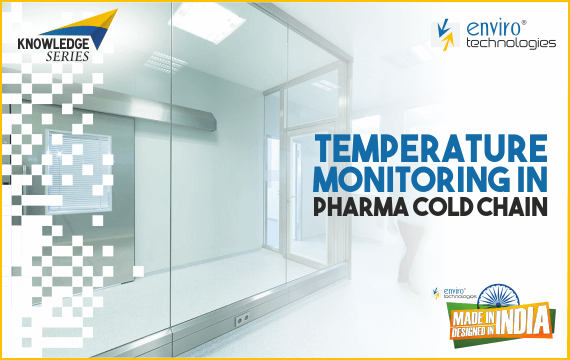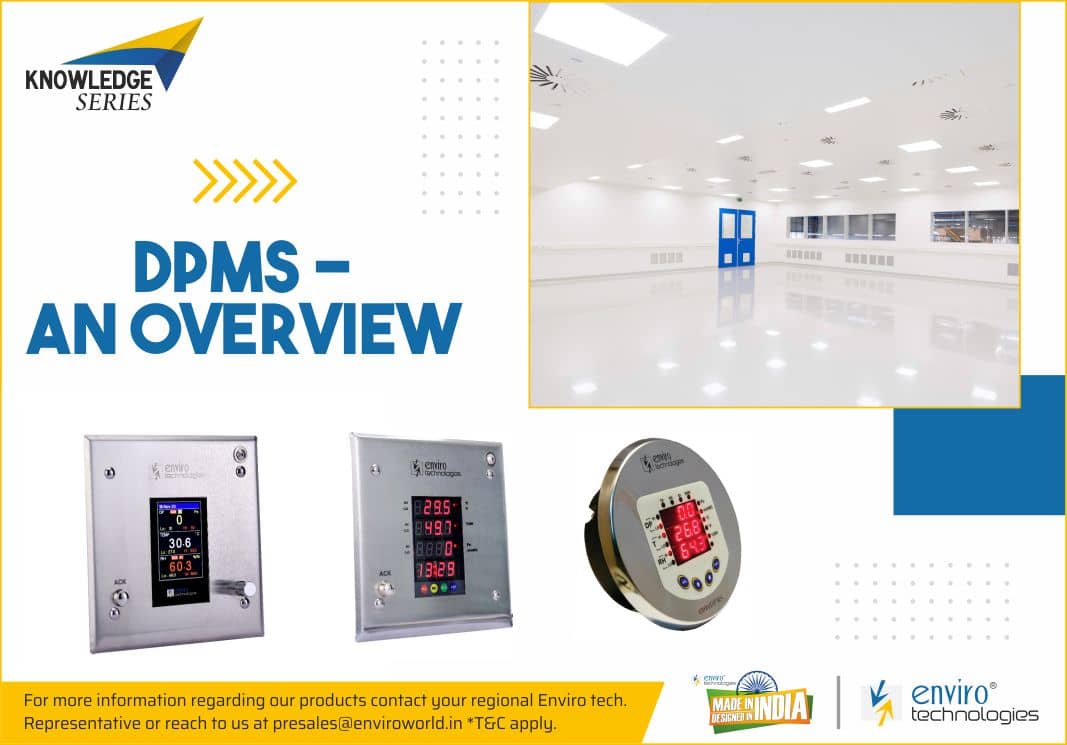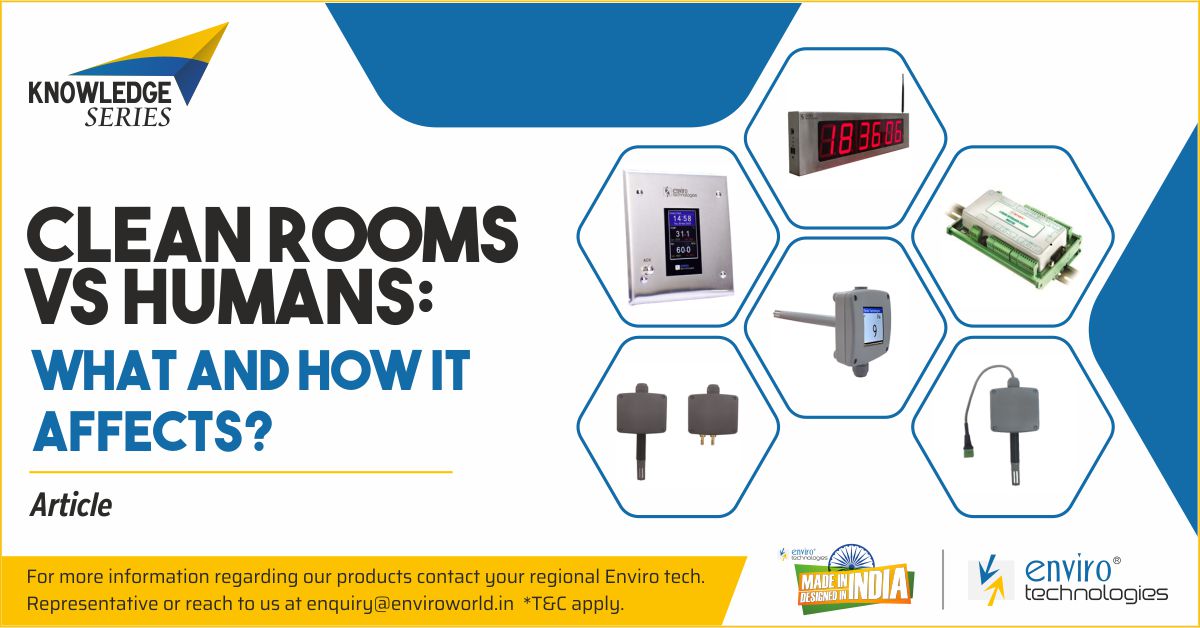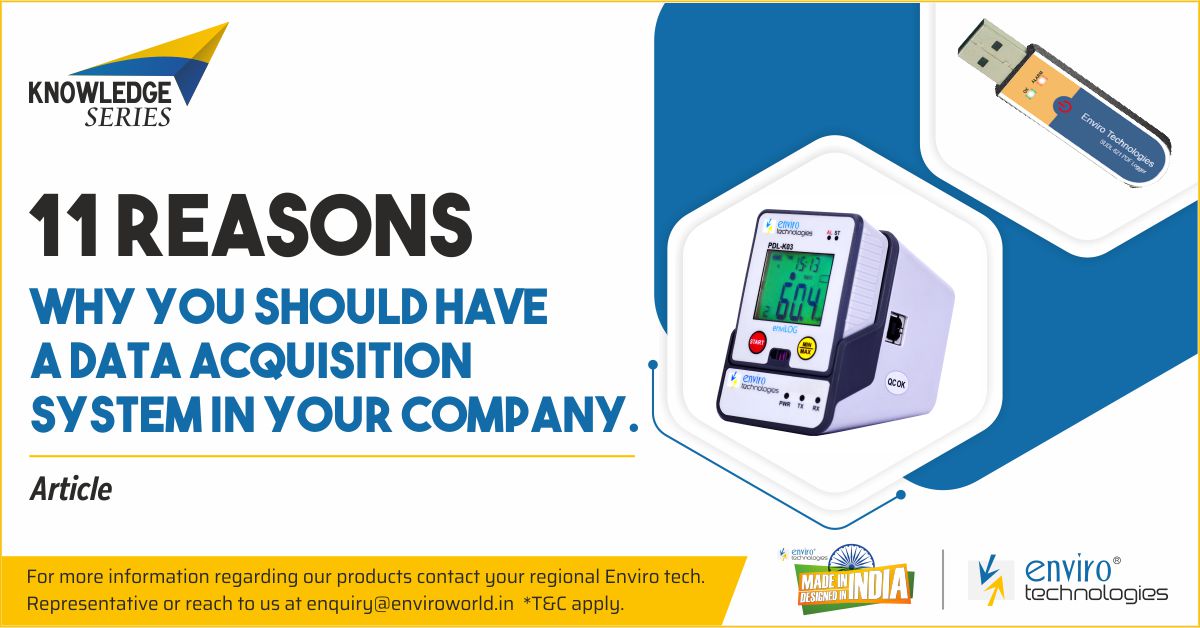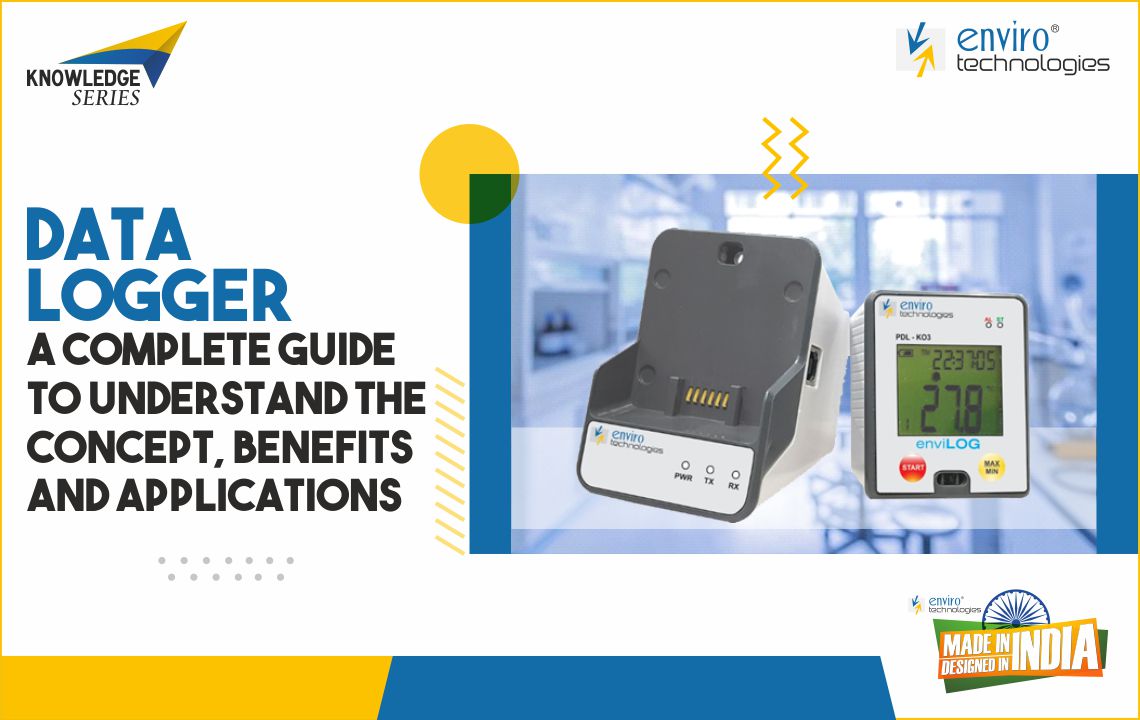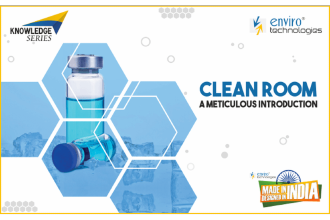- GxP Good Practices
- Temperature Monitoring Methods in Pharma Cold Chain Logistics
- Where to Use Which System
- Choosing the Right Temperature Monitoring System
Around one-third of total temperature-sensitive products worth billion dollars are lost annually in pharmaceuticals industries due to lag in temperature monitoring systems. This wreaks havoc both on the economy and shakes consumer’s trust in the healthcare system. Hence, it wouldn’t be an overstatement if we claim that the temperature monitoring system forms the backbone of the cold chain system. To make sure that the system stands strong, various organisations formulated Goods Practices (GxP). Let’s understand the temperature monitoring system better, starting with GxP.
GxP Good Practices
GxP, an acronym for Goods X Practices, refers to the guidelines and regulations formulated and enforced by various national and international agencies. It ensures that crucial products such as medicines, vaccines or food products meet the highest quality standard, are safe, efficient and meet their intended use. ‘X’ signifies the variable that keeps changing according to the industry needs, for example, manufacturing, distribution, laboratory etc. These guidelines apply to industries dealing with products that may have a detrimental effect on people’s lives, such as food, pharmaceutical, medical devices, and life sciences organisations.
Formed by different regulatory bodies such as Food and Drug Administration, the European Medicines Agency, World Health Organization or the International Council for Harmonisation, the guidelines ensure that products, from manufacturing to processes and thereby the finished products are safe to use.
GxP practices comprise five elements commonly referred to as 5Ps:
- People (involves fully trained staff who are abreast of the rules, their roles and responsibilities).
- Procedures (involves documentation of the critical processes and investigation reports of the hurdles faced during the steps).
- Products (contains specifications of raw materials, components, finished products, manufacturing practices, testing, sampling and records).
- Premises and equipment (contains specifications on the maintenance of equipment to avoid cross-contamination).
- Processes (contains clearly defined rules and regulations to be followed, documentation and control procedures).
The 5Ps strengthen the core GxP principles, which rests on three pillars. They are:
Traceability
The process of documenting the entire process, from creation to finished product. The log details the complete procedure step by step and notes every possible developments and deviation. This allows to trace a product’s history, reconstruct its lifecycle and determine the contribution of every item and personnel involved in its making.
Accountability
The process of maintaining records of everyone involved in the process, including details of their professional competence. The details also comprise their role in the product development and the kind of contribution they made.
Data Integrity
The process of maintaining records of everyone involved in the process, including details of their professional competence. The details also comprise their role in the product development and the kind of contribution they made.
Pharma companies across the globe adhere to GxP guidelines strictly, formed to deliver safe products to the consumers. They are a step towards building a pharmaceutical quality system that promises efficient management along with quality control and risk management. Some of the commonly followed protocols are:
Good Laboratory Practice (GLP)
Set by the FDA, these standards apply to non-clinical laboratory trials and ensure reliability in results. They govern the planning, performance, monitoring, recording, reporting, and archiving of tests and assess them for the safety and efficacy of the product.
Good Clinical Practices (GCP)
Set by the FDA, these standards apply to clinical trial. It ensures that companies have taken appropriate safety measures while designing and conducting clinical trials on human subjects. Additionally, it ensures that the tests produce reliable and credible data, conducted only if the benefits outweigh the risks, is based on a solid scientific foundation and performed only by highly trained staff for maximum safety and security of all the parties involved.
Good Manufacturing Practices (GMP)
This applies to pharma industry manufacturers who are involved in making medicines for human consumption. It includes guidelines on ingredients, packaging, labelling, storage and staff involved to produce efficient and safe products.
Good Distribution Practice (GDP)
This states that only those companies complying with GDP are authorised to sell, supply, import or export human medicines. It’s a distributor’s guide on purchase, storage, transportation, repackaging and relabelling, documentation and record-keeping of the medicines. This guideline also ensures that the companies do not compromise the medicine’s quality throughout all stages and consumers get the right product.
Temperature Monitoring Methods in Pharma Cold Chain Logistics
A 2019 study conducted by IQVIA Institute showed that the pharma industry incurred losses worth $35 billion due to temperature-related issues. Compliance and legal rules coupled with environmental factors make it more challenging to maintain the potency of medicines and vaccines. Studies conducted by various organisations have shown that around 25% of vaccines have degraded due to faulty maintenance of cold-chain. Furthermore, 30% of products were lost due to logistics issues, and 20% of temperature-sensitive products face damage due to prolonged exposure to unfavourable temperature. This calls for an effective temperature monitoring system that flags off inconsistencies in the system to avoid losses.
Temperature-sensitive goods go through many stages and checkpoints before reaching the final destinations, which leave them susceptible to various environmental factors, including temperature, light, humidity and cleanliness during storage and transit. Hence, it is vital to station suitable equipment and procedures to monitor their temperature regularly so that the product quality is not compromised.
Temperature monitoring forms a vital component of quality pharma management. Various technologies are employed to monitor temperature that notifies anomalies in the system. Thus, allowing us to take corrective measures in a stipulated time. Some of the commonly used temperature monitoring solutions for cold chains include:
Thermometer
The cold chain uses various types of thermometers to maintain and monitor refrigerator temperatures. Most cold chains use a thermometer that can record the maximum and minimum temperature. Usually, thermometers are added to all the components to measure the internal temperature and maintain it. Types of thermometers used in the cold chain include: Alcohol or mercury thermometers that show precise temperatures in the immediate area; dial thermometer for displaying the current temperature; liquid-crystal thermometer with a row of temperature-sensitive indicator spots to indicate temperatures in cold boxes; recording thermometer that records the temperature continuously on a paper chart.
Temperature Data Loggers
These are customisable and programmable innovations used to monitor the temperature of temperature-sensitive products in refrigerators/freezers and the environment by capturing data via temperature sensors.
They are usually a part of the cold chain shipment in transit. Following temperature data loggers are commonly used in the cold chain:
Passive Temperature Loggers: Battery-powered handheld devices that log temperature data which can be retrieved using USB or WiFi
Wireless Temperature Loggers: RFID or Bluetooth temperature data sensors. The equipment makes it easier to access data wirelessly, immediately transfer their alarm status to an office PC and avoid damages
However, these temperature monitoring devices come with limitations. Most of the devices notify issues after the event has occurred. Thus, giving a very narrow window to take action. This calls for a more active automated device that sends data in real-time. These data loggers, such as enviroSCAN- Real-Time Temperature & Humidity Monitoring Solution for Multi-location Pharma Warehouses in the Cold Chain, can connect to a communication network, which allows them to transmit live data and instant alerts during emergencies. It uses multi-channel scanners and data loggers along with a web-based Enviro multi-location warehouse monitoring software. Together, it monitors the temperature and RH under which the vital medicines and vaccines are stored thus, assisting in Good Distribution Practices (GDP).
Where to Use Which System
Temperature monitoring system in cold chains is a combination of various equipment put together, each with its requirement. All pharmaceutical products may not be sensitive to environmental factors. In such cases, companies prefer to use temperature indicator strips to check if goods remain safe under certain temperature conditions.
Cold rooms and freezer rooms usually use a central temperature monitoring system to maintain the potency of temperature-sensitive products. These programmable temperature and event logger systems with integral alarm and auto-dialler options are best for monitoring storage conditions. Battery operated programmable temperature data logger with the capacity to store downloadable data for a long time are also common in cold chain systems.
The Pharma industry manufactures and distributes goods that are subject to spoilages if exposed to environmental factors. Data loggers, thermometers and temperature indicators notify the risks after the damage has occurred, leaving a narrow window for corrective measures. Hence, some companies prefer to install systems that can measure, maintain and record the temperature of products throughout their journey, share the updates in real-time and remain accessible from everywhere. For this, an IoT-based, internet-connected monitoring system works best, implementation of which is costly.
Choosing the Right Temperature Monitoring System
Before opting for a temperature monitoring system for cold chains, industries must consider a few pointers based on their type, for example, equipment required in the food and beverages industry is different from the requirements of pharma industries. Companies must procure and study sufficient data to understand the specific area of losses; identify the scope of improvement in the process for profitability; analyse competitive advantage; and seek opinions of all the stakeholders involved in the process especially, the hands-on staff, to gain insights from their experiences.
While choosing the appropriate temperature monitoring system, one must consider these six factors:
- Temperature Sensors for measurement accuracy.
- thermal buffer to aid temperature fluctuations at the sensor.
- temperature measurement device to measure and record the temperature.
- data storage for immediate data reporting.
- software to control the system operations
- alarming to get immediate notifications.
Now, let us explore the five steps vital for choosing the correct temperature monitoring system:
Identifying industry:
Every industry demands a specific temperature monitoring system, tailor-made just for them. Hence, it is crucial to identify your industry type and select a system that suits you the most. For example, pharma industries need a system such as enviroSCAN that complies with GDP regulations to maintain product's safety. The Pharma industry also needs a system that monitors and records data periodically to produce at the behest of the stakeholders.
Complete solution:
Pharma industry is more susceptible to losses due to temperature excursions. Billions of dollars are lost, and the healthcare system is compromised. Hence, it is crucial to choose a system that provides a complete solution for maintaining the potency of temperature-sensitive products and ensures minimum spoilage. An ideal system should have real-time GPS tracking, suitable temperature sensors, alerts feature, reliable connectivity and easily configurable services with user-friendly software.
Data Accuracy:
Temperature-sensitive products go through a long journey, from manufacturing units to actual sites, leaving them exposed to various environmental factors. Hence, temperature monitoring is vital to avoid mishaps, produce data to understand the cause of damages, and assess the potency of products. Moreover, it helps to comply with the regulatory bodies and acts as a stamp of quality. Hence, while choosing a system, companies should consider the 4 V’s of big data: velocity, veracity, volume, variety. This allows the industry to choose a system based on the type and the magnitude of data required, along with the speed at which one wants to generate it.
Seamless Connectivity:
Choosing a strong cellular connectivity is vital to track important assets in remote locations. This allows maintaining the cold chain management via data received during the entire journey.
Better Benefits:
After assessing the features and size of your business, choose a system that promises the best ROI. enviro SCAN is one of the top-notch products in the domain. It offers real-time temperature and humidity monitoring solutions for multi-location pharma warehouses in the cold chain. It gives real-time data logging with date and time as per user-programmable logging interval, a great memory capacity for data storage with an onboard buzzer, and an optional external hooter (if required).
For guidance for choosing the right system, contact us at: https://www.enviro-technologies.com/contact.php
